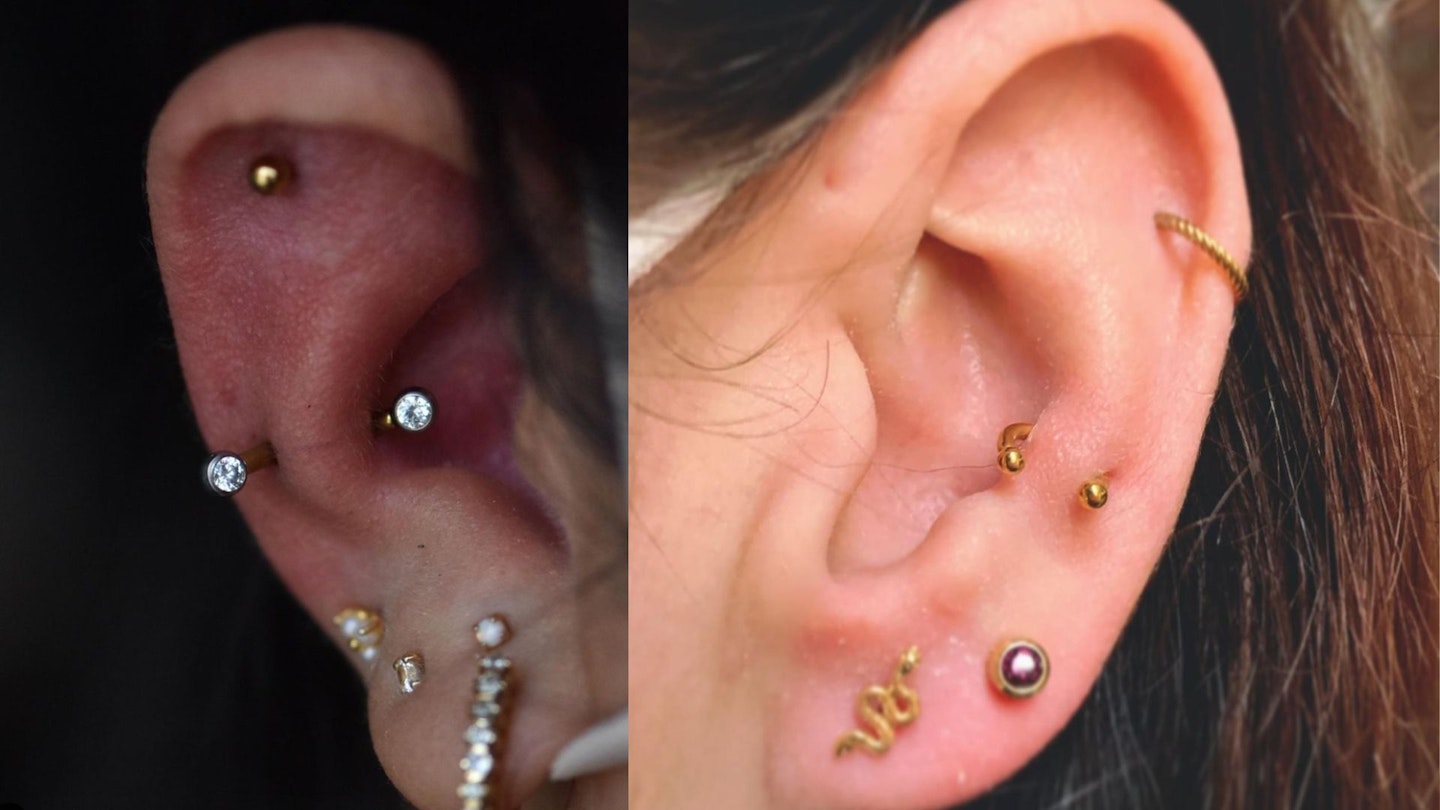When it comes to ear piercings, the options truly feel limitless. There are conch piercings, daith piercings, tragus piercings and everything in between, each enabling you to create your perfect curated selection of stackable earrings. And if you're looking for the next one to add to the mix, let us introduce you to the snug piercing. Like the name suggests, it's a fine little piercing that sits neatly along the outer ear but when you catch sight of its shimmer, its subtle dazzling impact is enough to make you feel smug. Want to know more? We've got you covered. Scroll through our guide below on everything you need to know about snug piercings.
What Is A Snug Piercing?
One of the newer piercing types, it's a horizontal double-ended piercing located at the top of the anti-tragus (the pointy, triangular piece of cartilage at the top of the lobe) and is inserted through the anti-helix which can be found between the rim of your ear and the inner cartilage. It's positioned midway up the ear, in between the ridges of your ear rim and is considered a more alternative style of ear piercing thanks to the thick piece of cartilage the piercing passes through, ouch (more on that later)! As for jewellery used to dress up the area, you can expect curved barbells or rings, but always make sure these are good quality pieces made from titanium, gold or implant-grade stainless steel.
How Is a Snug Piercing Done?
A snug piercing is located in a tight little spot, so getting the perfect marking may take more time than your regular ear piercing. To begin with, the area is firstly cleaned, a professional piercer will then make marks on the ear with a skin-safe pen to ensure the placement is correct, a curved sterilised gauge needle is then pushed through the cartilage and followed with jewellery.
Pain, Healing And Aftercare?
We won't lie, from what we've heard this piercing isn't for the faint hearted. Due to the thickness of the cartilage the needle needs to pass through, you can expect this piercing to come with a higher level of pain compared to other ear piercings. Having said that, if you have a higher pain threshold you may find this piercing a breeze, the level of pain varies from person to person, but for peace of mind we would place this at a medium on the pain scale. One thing to note is that this piercing may not be suitable for you as it may be possible that your ear shape won’t support a snug piercing, but that's a matter of anatomy which your piercer will be able to advise on.
The snug piercing typically takes three to six months to fully heal because of the cartilage's thickness. A good telltale sign of it being fully healed is when no part of it is sensitive and there is no crust build up for a full consecutive two weeks. Once you've reached this stage, you're all good to swap out other jewellery pieces.
This is a highly sensitive area so being careful not to irritate it is key. Avoid things like sleeping on your new piercing, swimming, knocking or putting pressure on the area and touching it too much. For aftercare, ensure you're gently but thoroughly cleaning the area twice a day with salt water, a saline solution or tea tree oil, being careful to bathe it using cotton wool. You can also use a natural, unscented soap.
What Are The Risks?
Watch out for cartilage bumps. Some are called pustules and these are filled with fluid, others are called keloids and these are thick scars that develop at piercing areas. These can be caused by poor aftercare or if your body is rejecting the piercing. Reach out to a professional if these develop.
